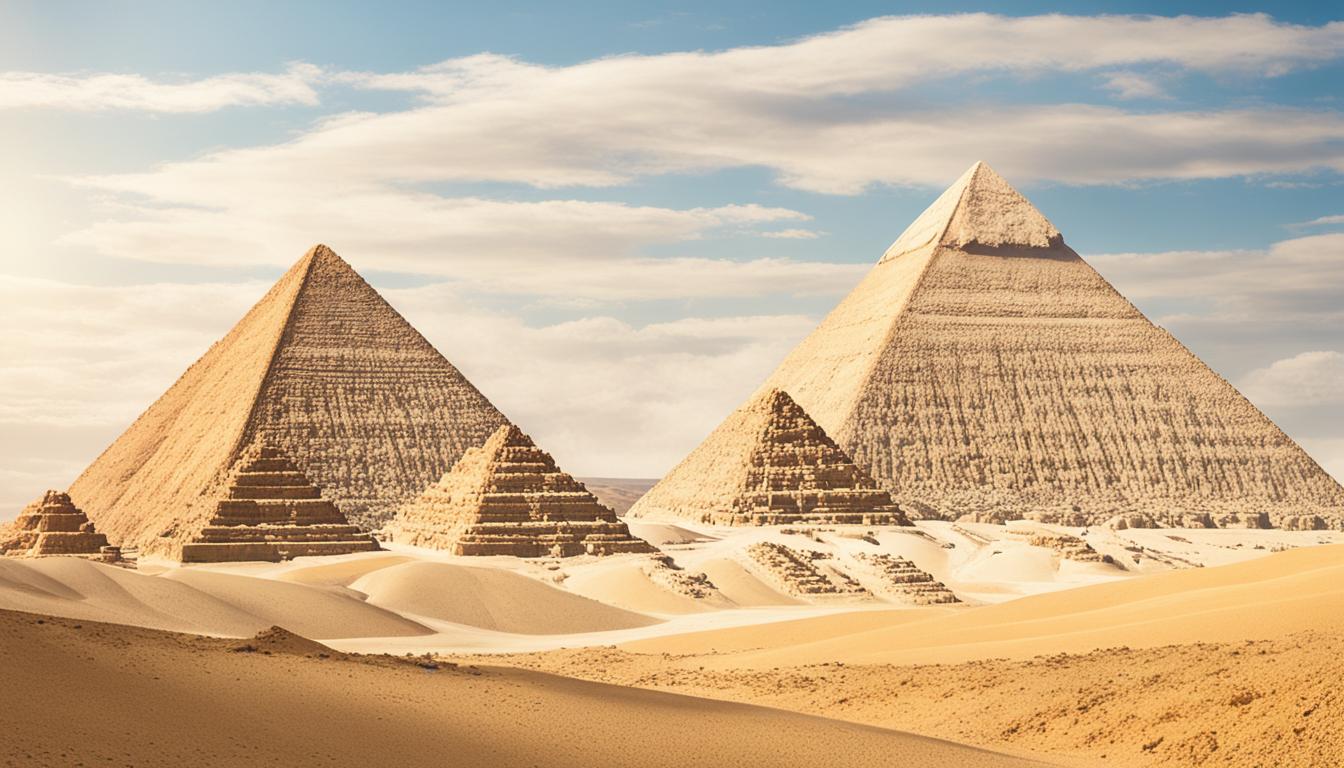Ancient Egyptian pyramids once gleamed with white limestone. This shiny sedimentary rock covered the structures at Giza and elsewhere. The smooth, polished layer created a stunning visual effect visible for miles.
The Great Pyramid of Giza used 6.1 million tons of limestone for its outer layer. This casing enhanced the pyramid’s beauty and protected its underlying structure from the elements.
The Pyramid of Khafre still has some original limestone casing at its peak. This gives the impression of a second peak on top. It offers a glimpse into the pyramids’ original appearance.
Khafre and Menkaure pyramids also had red granite casing on their lower levels. This added to their overall grandeur in ancient times.
White limestone wasn’t unique to Giza pyramids. Many other Egyptian pyramids, like those at Saqqara and Dahshur, had this outer layer. Builders sourced limestone from nearby quarries to avoid long-distance transportation challenges.
For more on historical communication, read about the Washington-Moscow hotline during the Cold War.
Key Takeaways
- The ancient Egyptian pyramids were originally covered in a layer of fine white limestone.
- The limestone casing gave the pyramids a smooth, polished appearance that shone brightly under the sun.
- Approximately 6.1 million tons of limestone were used in the construction of the Great Pyramid of Giza’s outer layer.
- The Pyramid of Khafre still retains some of its original limestone casing around its peak.
- Many other pyramids throughout ancient Egypt also featured white limestone casing.
Construction Materials Used in the Great Pyramid of Giza
The Great Pyramid of Giza was built using two main types of limestone blocks. The core used limestone from Giza, quarried near the pyramid site. These blocks varied in size and were rough, with gypsum mortar filling gaps.
Sand-filled cavities were found within the core through exploratory drilling. The outer casing required higher quality limestone from the Tura quarries across the Nile.
About 67,390 cubic meters of fine Tura limestone created the smooth, gleaming outer casing. This limestone was transported across the Nile to the Giza plateau.

Skilled workers hauled the blocks into position and smoothed them meticulously. They likely worked from the top down to ensure a uniform appearance.
The use of rough local limestone and fine Tura limestone shows the ancient Egyptians’ attention to detail. It also demonstrates their impressive engineering skills in constructing the Great Pyramid of Giza.
The Deterioration of the Pyramids’ Casing Over Time
The white limestone casing of the Giza pyramids has deteriorated over centuries. This process began during Tutankhamun’s reign, around 1336-1327 B.C. Egyptian rulers stripped away the stones for other building projects.
An earthquake in A.D. 1303 likely loosened the remaining stones. Arab scholar Abd al-Latif noted that much of the Great Pyramid’s casing still existed in the 12th century A.D. However, limestone from other pyramids was being used for construction in Cairo.
Many limestone blocks from the pyramids now serve new purposes in medieval Cairo and nearby villages. They pave floors, adorn walls, and act as lintels above doorways. These repurposed materials showcase the pyramids’ enduring legacy.

Leave a Reply